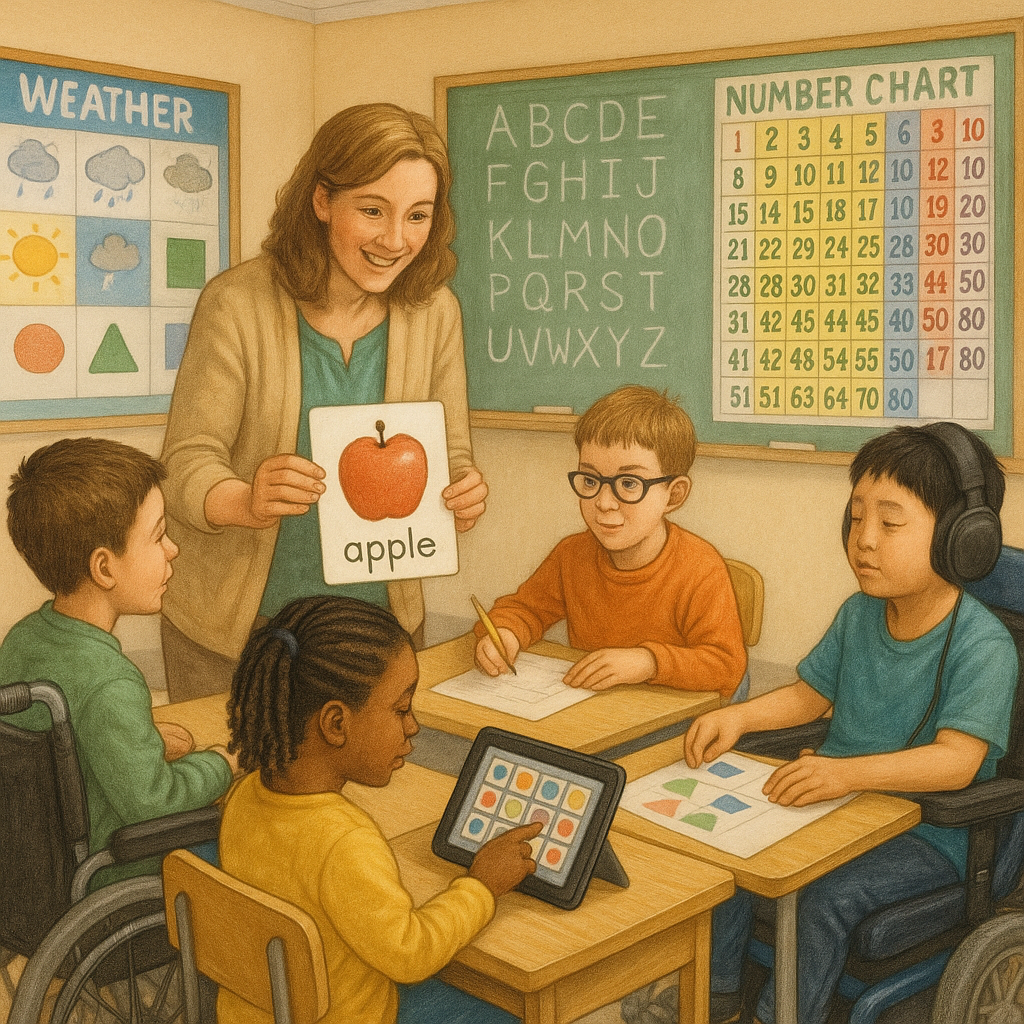
Introduction
Teaching students with disabilities takes creativity and structure. This article shares proven classroom strategies special education teachers can use to improve learning and build independence in inclusive classrooms.
Here are proven strategies every special education teacher can implement to improve student engagement and learning outcomes.
Use Differentiated Instruction
Differentiated instruction tailors teaching methods to each student’s readiness, interests, and learning profile, allowing you to meet diverse needs effectively.
Practical tips:
- Offer multiple ways to learn content (visual, auditory, kinesthetic).
- Modify assignments based on individual IEP goals.
- Use flexible grouping to encourage peer support and collaboration.
Learn more here: Edutopia: Differentiated Instruction
Incorporate Visual Supports and Schedules
Visual supports are highly effective for students with special needs, helping them understand routines and expectations.
How to implement:
- Use visual schedules to outline daily activities.
- Create checklists for multi-step tasks.
- Utilize graphic organizers for reading comprehension and writing activities.
Visual supports help reduce anxiety and increase independence in the classroom.
Leverage Assistive Technology
Assistive technology can enhance learning and accessibility for students with disabilities:
- Speech-to-text software for writing support.
- Text-to-speech tools for reading comprehension.
- Communication devices and apps for nonverbal students.
Explore resources here: Edutopia: Assistive Technology
Use Positive Behavior Support Systems
Behavior management is crucial for creating a structured learning environment:
- Set clear, consistent expectations with visual rules.
- Use positive reinforcement systems like token boards.
- Incorporate social stories to teach appropriate behaviors and social skills.
These strategies help reduce disruptions while reinforcing desired behaviors.
Foster Collaboration with Families
Parents and caregivers are valuable partners in supporting student success:
- Communicate regularly about progress and challenges.
- Share strategies and tools parents can use at home to reinforce classroom learning.
- Encourage families to participate in IEP meetings and discussions.
Learn how to strengthen family partnerships: Wrightslaw Parent Advocacy
Use Authentic Assessments to Measure Progress
Authentic assessments allow students to demonstrate knowledge in real-world contexts:
- Use projects, presentations, and portfolios instead of solely relying on tests.
- Align assessments with IEP goals and student strengths.
- Provide feedback that helps guide further learning.
Learn more about authentic assessments: Edutopia: Authentic Assessment
Why These Strategies Matter:
Using these strategies:
1. Enhances student engagement and participation.
2. Supports IEP goals effectively.
3. Encourages independence and confidence in students.
By creating a structured, inclusive, and supportive classroom, you will help your students thrive academically and socially.
To understand how funding and policies impact your ability to implement effective strategies in the classroom, read The Politics of Education K-12 by Lonnie Palmer. This book explores tested solutions to improve American education systems and can empower you as an educator.